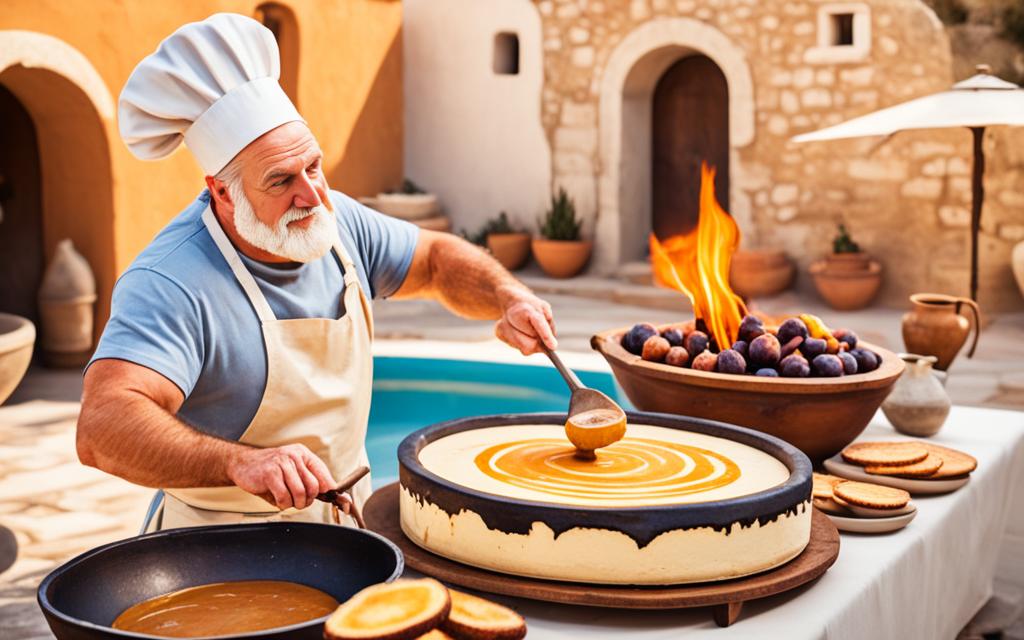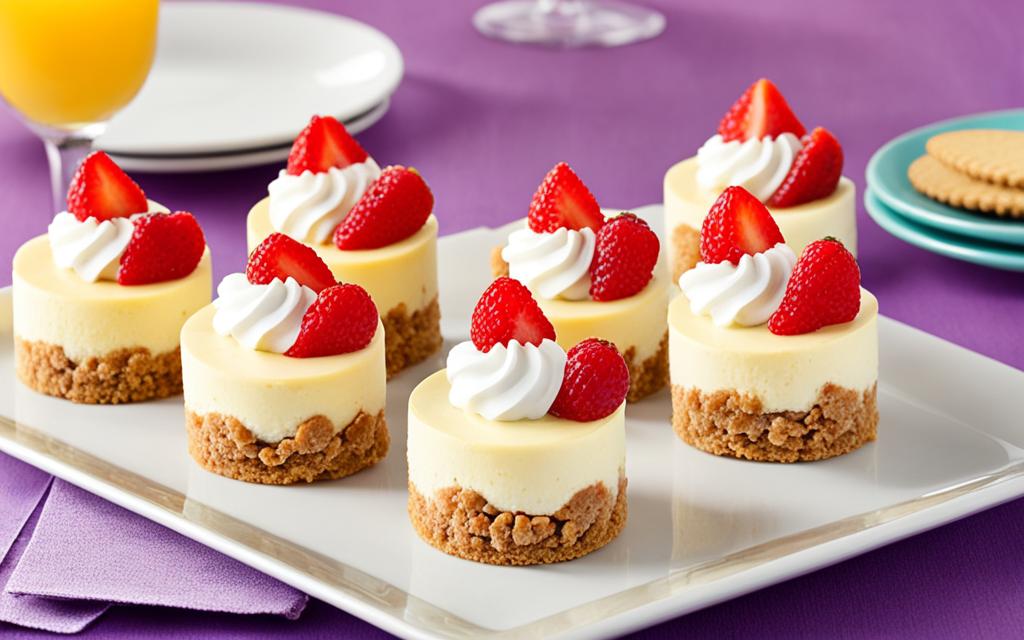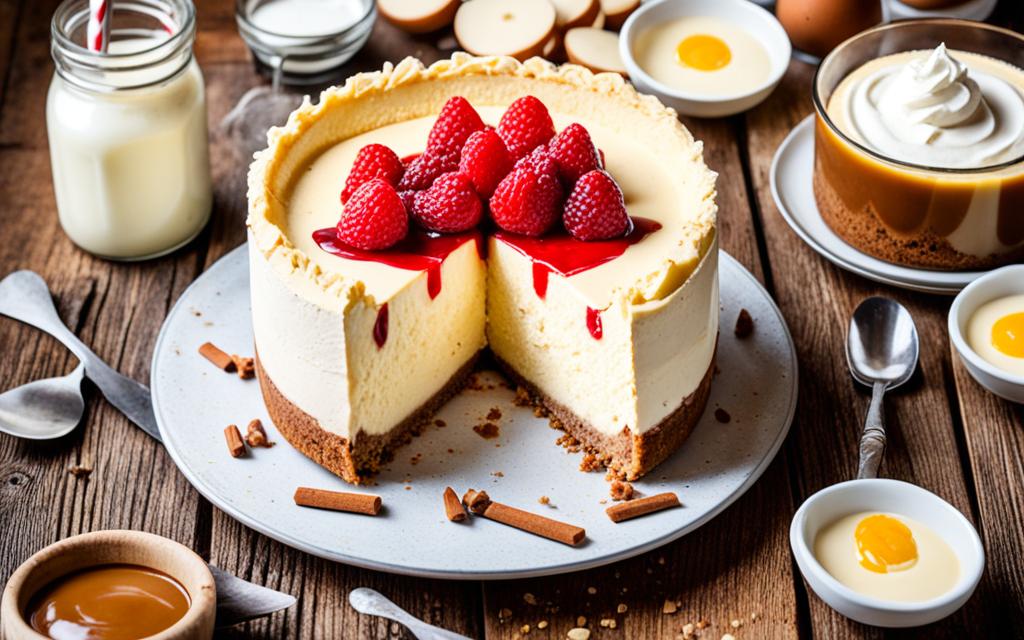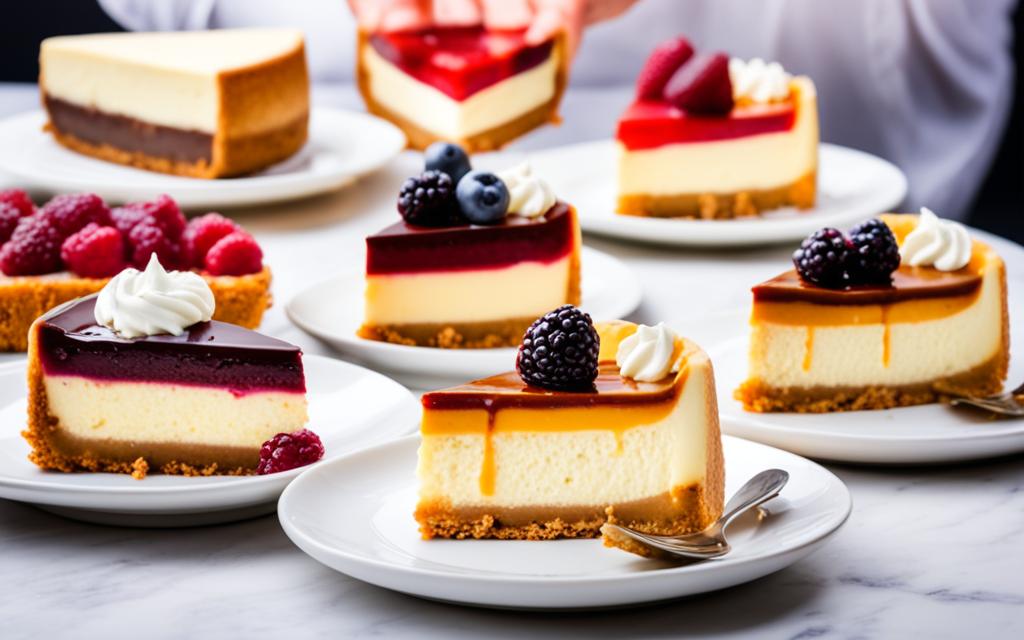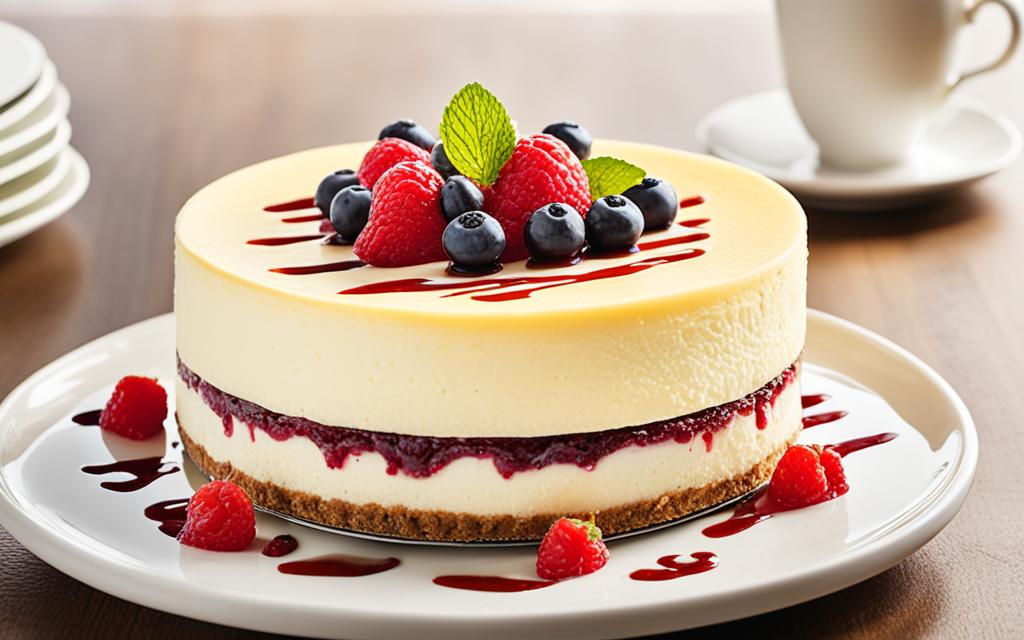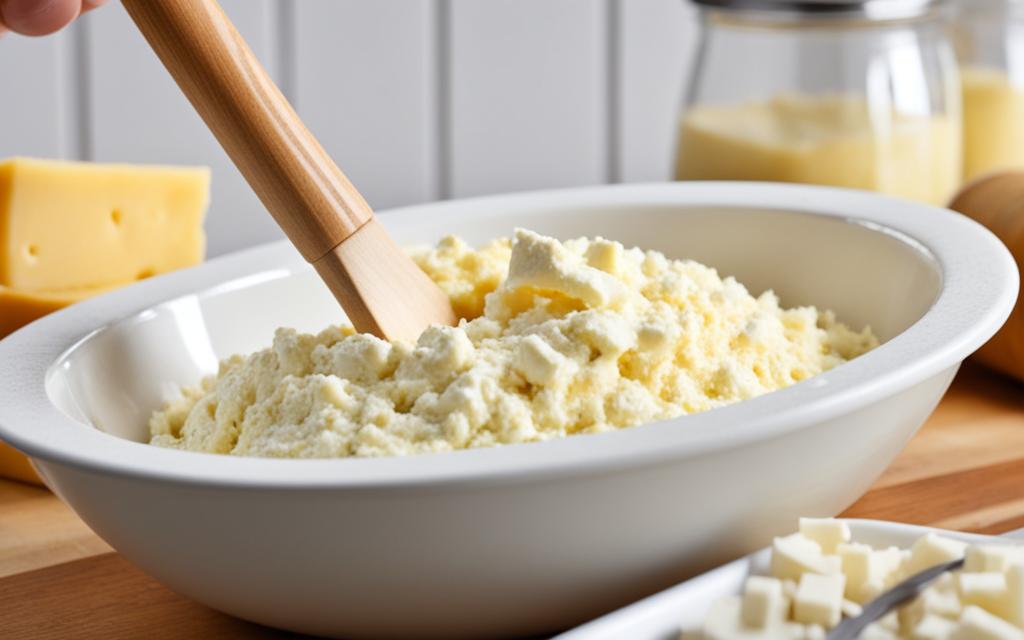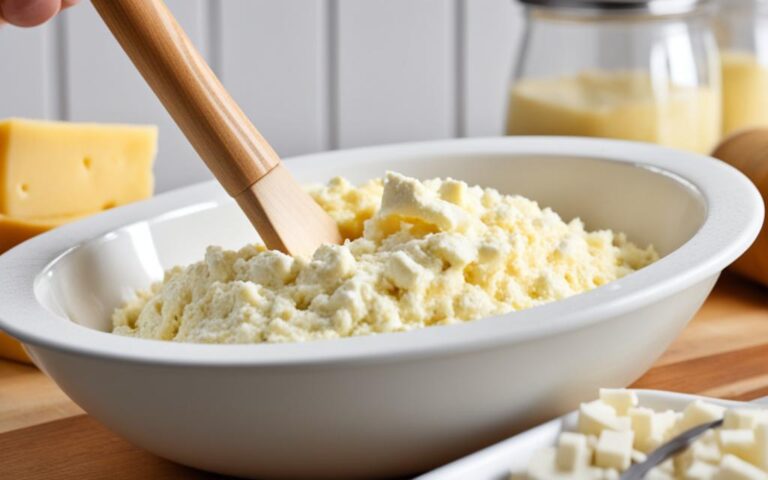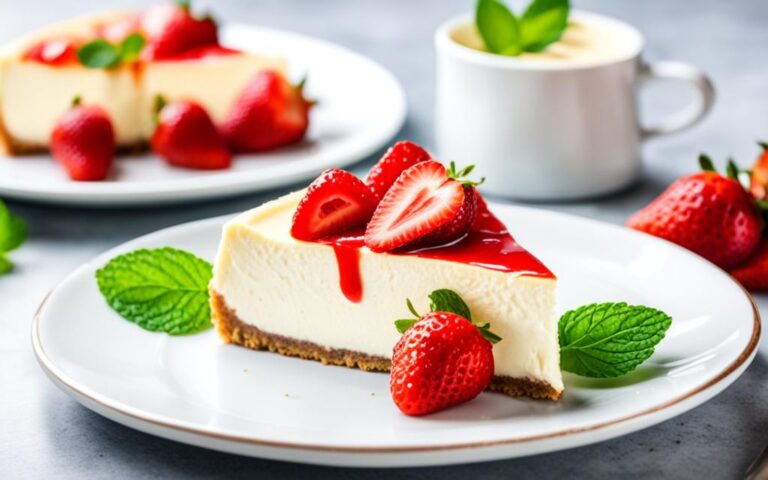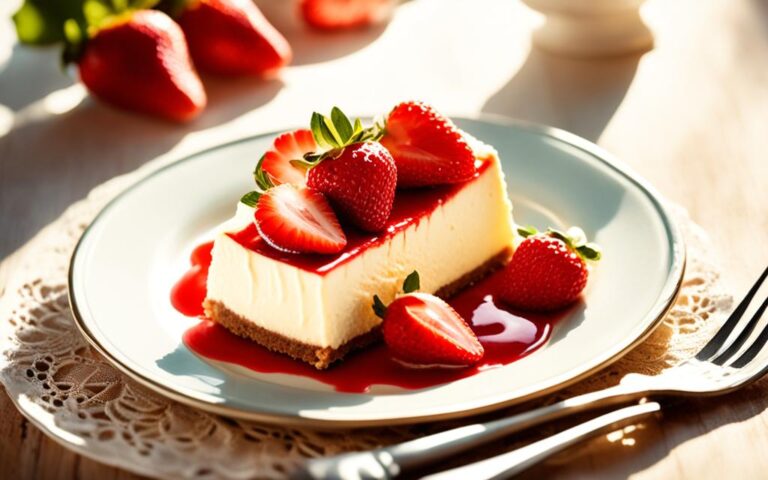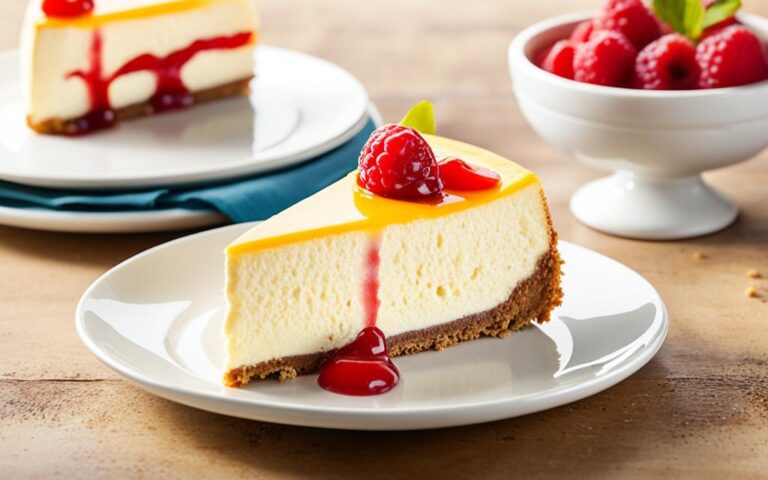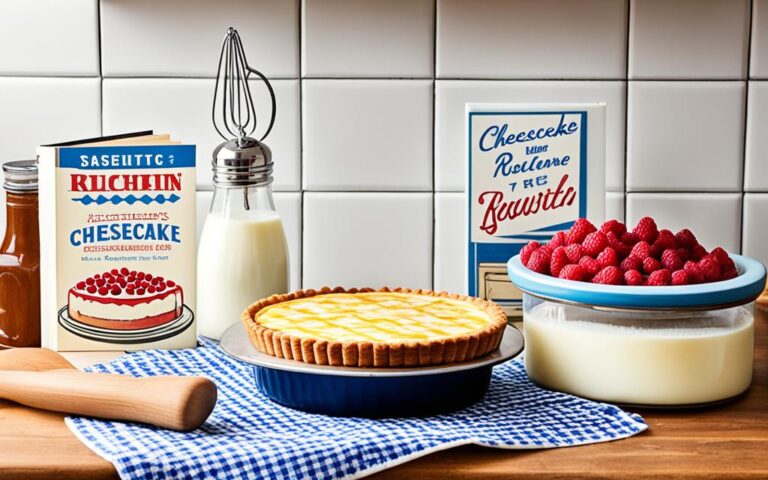The Origins of Cheesecake: A Look Back at Ancient Greek Recipes
Cheesecake. Just say the word and you picture creamy, dreamy slices. Its history goes back over 4,000 years. Yes, really! Its birthplace? Ancient Greece. Join me as we dig into the rich history of this beloved dessert.
In ancient Greece, cheesecakes were a special treat. They likely started on the stunning Samos island. Evidence shows cheese molds from 2,000 B.C. This reflects the Greeks’ deep love for cheese. Cheesecakes were praised for their taste and as a power-packed snack given to athletes at the first Olympics in 776 B.C.
The oldest-known Greek cheesecake recipe is from 230 A.D. Thanks to Athenaeus, we know it used cheese, honey, and wheat. It portrays Greek culinary creativity in the ancient era.
The Romans also fell for cheesecakes. They made a warmer version with eggs, calling it “libum.” This treat became key in their special events. Marcus Cato wrote a cheesecake recipe in the first century B.C. that still sounds delicious today.
Cheesecake eventually traveled with European explorers to the New World. There, its popularity soared.
The 18th century marked a shift in how cheesecake was made. European bakers swapped yeast for eggs, creating a custard-like style. America made cream cheese a star, birthing the famous New York style cheesecake. This version soon became a global favorite.
Today, cheesecake varies across the world. Italians use ricotta, Greeks add mizithra or feta, and Germans prefer cottage cheese. The Japanese mix cornstarch and egg whites for their twist. The options are endless, with even blue cheese, seafood, and tofu making unique appearances.
A key ingredient in cheesecake, Greek honey, boosts its flavor. This honey is famed for its taste and color, making any dish better. It blends perfectly with desserts, dressings, and glazes.
When you enjoy cheesecake, reflect on its ancient Greek heritage and global journey. It’s more than a dessert; it’s a piece of world history. Cheesecake connects us through time and culture in a sweet, delicious way.
The Evolution of Cheesecake Recipes
As the Romans grew their empire, they upgraded the cheesecake. They started adding eggs and serving it warm. They named it “libum” and reserved it for special events. Marcus Cato documented the first-century B.C. recipe.
By the 18th century, cheesecake was becoming modern. Europeans switched from using yeast to beaten eggs. This change made cheesecake taste more like a dessert.
European settlers carried their recipes to America. They began using cream cheese in the recipe. This made the New York style cheesecake famous in the 1900s. Cities like Chicago and Philadelphia also made their own versions.
Regional Variations of Cheesecake in America
Every city in America adds its magic to cheesecake. Some famous styles include:
| City | Cheesecake Variation |
|---|---|
| New York | New York style cheesecake is known for its dense and creamy texture. It’s made with cream cheese, eggs, sugar, and vanilla extract. The crust is typically a graham cracker or cookie crust. |
| Chicago | Chicago-style cheesecake is a hybrid between a classic cheesecake and a deep-dish pizza. It has a deep crust and is baked for a longer period, resulting in a rich and indulgent cheesecake. |
| Philadelphia | Philadelphia-style cheesecake is known for its light and fluffy texture. It incorporates sour cream in the filling, which gives it a tangy flavor. |
“The regional variations of cheesecake in America showcase the creativity and diverse culinary traditions across different cities.” – Chef Amanda Johnson
These regional cheesecakes are now celebrated across the U.S. Whether you love the New York style or the Philadelphia kind, cheesecake has a flavor for all.
Cheesecake Around the World
Cheesecake is a dessert loved all over the world. Each place makes it their own. In Italy, ricotta cheesecake is creamy. In Greece, they use mizithra or feta for a tangy taste.
Germany has a unique version with cottage cheese. It makes the cheesecake texture different. Japanese cheesecakes are known for being light and fluffy. They use cornstarch and egg whites.
But, cheesecake flavors can be very different. There are cheesecakes with blue cheese and even seafood. They show how creative we can get with desserts.
Greek honey is a great addition to cheesecake and baking. It brings rich and aromatic flavors. You can add it to Greek yogurt, salad dressings, or roasted veggies. It adds sweetness and depth.
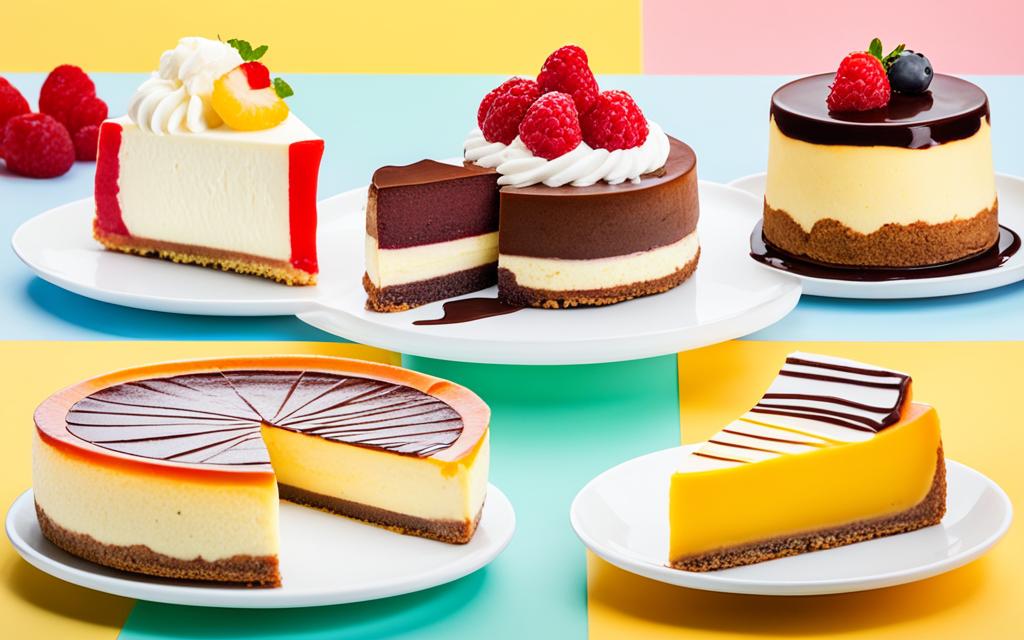
In the end, cheesecake shows the beauty of food from different places. It brings us together with its many versions. From Italy’s ricotta to Japan’s fluffy cakes, there is something for everyone.
Conclusion
Cheesecake traces back to ancient Greece and has a rich history. It has changed and spread worldwide, delighting everyone. From its start in ancient Greek cookbooks to its many types today, cheesecake is a favorite treat.
Over time, each place added its unique touch to cheesecake. The ancient Greek version used cheese, honey, and wheat flour. When it got to America, cream cheese was added, becoming a key ingredient.
Todays, we have many types of cheesecake from around the world. Italian cheesecake uses ricotta, Greek uses mizithra or feta, and Germans like cottage cheese in theirs. Japanese cheesecake has a special light texture thanks to cornstarch and egg whites. And, we even find unique ones made with blue cheese, seafood, and tofu.
But, no matter the type, cheesecake is always a mix of cheese, wheat, and sweet flavors. Its deep history and global love make it a cherished dessert. So, enjoy whatever style you like, and think of the ancient Greeks who first made it.
FAQ
Is cheesecake originally from Greece?
Yes, cheesecake goes way back over 4,000 years to ancient Greece. People think the first “cheese cake” was made on Samos, a Greek island. Cheese molds from around 2,000 B.C. have been found there.
What were the main ingredients in the ancient Greek cheesecake?
The oldest known Greek cheesecake recipe had cheese, honey, and wheat flour. These were the basics back then.
How did cheesecake evolve over time?
When the Romans took over Greece, they changed the cheesecake recipe. They then spread it across Europe, where different places made their own versions. In the 18th century, Europeans started using eggs instead of yeast. This made cheesecake more like the dessert we know today.
How did cheesecake become popular in America?
Europeans coming to America brought their cheesecake recipes. Soon, cream cheese was added, and it became a key part of American cheesecakes. New York style cheesecake became well-loved in the 1900s. It was especially popular in New York City.
Other places in America, like Chicago and Philadelphia, made their own kinds. They used things like sour cream and different toppings.
Do other countries have their own versions of cheesecake?
Yes, many places worldwide have their special kind of cheesecake. For example, Italians use ricotta cheese, while Germans like cottage cheese. The Japanese mix cornstarch and egg whites for theirs.
Specialty cheesecakes feature unique ingredients like blue cheese, seafood, and tofu.
Can Greek honey be used in baking cheesecake?
Greek honey is great for baking cheesecake. It brings a wonderful flavor to the dessert. Greek honey can also be put on yogurt, used in salad dressings, or as a vegetable glaze.
Is cheesecake still a popular dessert today?
Definitely! Cheesecake is a much-loved dessert worldwide. Its long history and cultural impact keep it a favorite for many.

